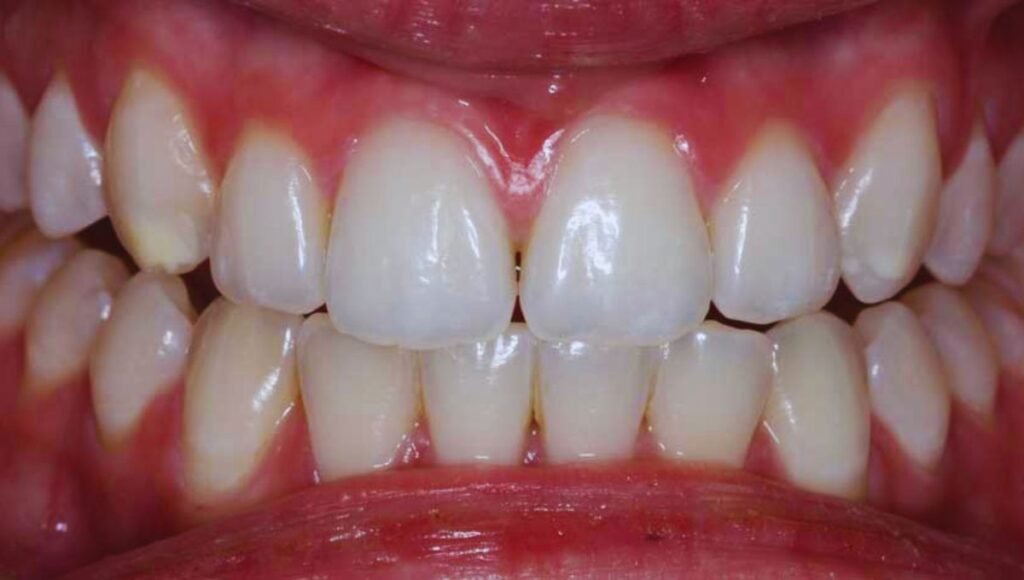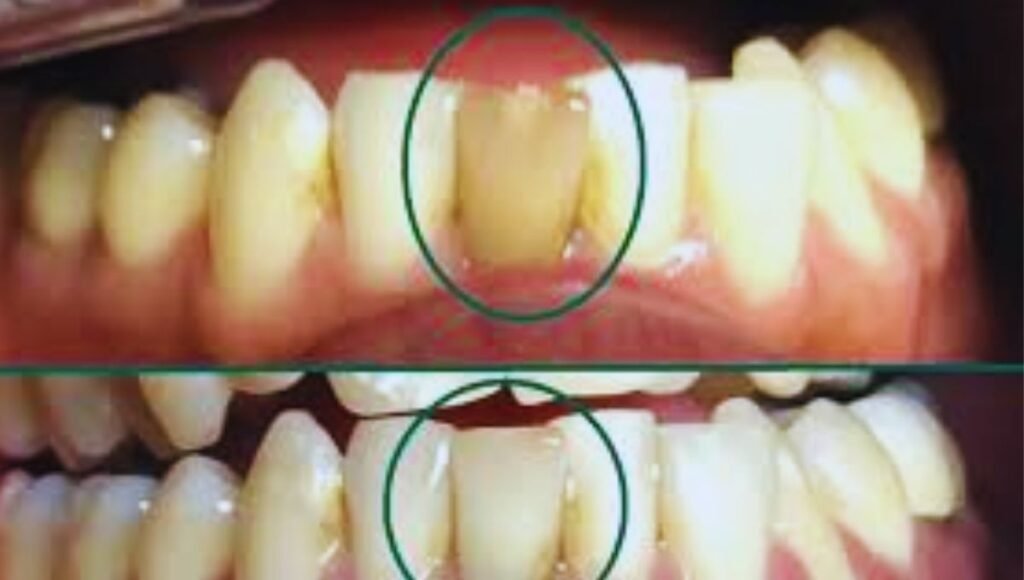How to Whiten Dead Tooth?
If you’re grappling with the challenge of a discolored dead tooth, you’re likely aware of the impact it can have on your smile. While it might seem overwhelming, there are professional treatments that can effectively restore its appearance. One of the most promising options is internal bleaching, a technique that targets the discoloration from within the tooth itself. It’s vital, however, to consult your dentist to determine if this method is suitable for your specific situation.
What’s more intriguing is how this process compares to other cosmetic alternatives like veneers or crowns, and which one could be the best solution for maintaining your tooth’s health and aesthetics.
Understanding Dead Tooth Discoloration

A dead tooth often becomes discolored due to damaged blood vessels within, preventing necessary nutrients from revitalizing its appearance. This discoloration can make you self-conscious about your smile, but understanding the underlying causes can help you address the issue effectively.
Tooth decay is a primary culprit behind a tooth ‘dying.’ When decay penetrates deep into the tooth, it can reach the pulp — the innermost part, containing nerves and blood vessels. This infection can cause the pulp to die, leading to a lack of blood supply and eventually a grayish or black appearance of the tooth.
A root canal is a vital procedure used to treat a dead tooth. During this treatment, your dentist or endodontist will remove the infected or dead pulp, clean the canal, and seal it to prevent further infection. While a root canal doesn’t restore the natural color of the tooth, it’s a necessary step to stop the decay process and preserve the tooth’s structure.
Understanding these aspects is essential as you explore options to improve your dental aesthetics. Remember, treating the root cause, not just the symptoms, is key to achieving a healthier, more confident smile.
Dental Bleaching Techniques
Now that you understand the treatment process for a dead tooth, exploring dental bleaching techniques can help restore a brighter smile. Dental bleaching for a dead tooth involves both at-home options and professional treatment, each serving distinct roles in oral care.
For at-home care, natural remedies may offer a mild improvement in whiteness. Products like whitening toothpastes or over-the-counter whitening kits are accessible but typically less effective on dead teeth due to the discoloration’s internal nature. It’s essential to consult with your dentist before starting any home treatment to verify it’s suitable for your specific dental history.
Professional treatments, conducted under the supervision of a dentist, use stronger bleaching agents that penetrate deeper into the tooth structure. During your dentist consultation, they’ll assess the extent of discoloration and recommend the most effective method. This might include a customized home bleaching kit with a higher concentration of whitening agent than what’s available over the counter.
Internal Bleaching Procedures
Delving into internal bleaching procedures, you’ll find they specifically target the unique challenges presented by dead teeth, effectively brightening them from within. Unlike external whitening, this process treats discoloration from the inside out, addressing the complexities of non-vital teeth where the typical bleaching methods fall short.
Internal bleaching begins with a careful assessment of your tooth’s health and the extent of discoloration. Your dentist will access the pulp chamber, which houses the tooth’s nerve and blood supply, now deteriorated in a dead tooth. They’ll remove any remnants of the nerve and disinfect the chamber thoroughly to prepare for the bleaching agent.
The chosen bleaching agent is then placed directly inside the tooth. This ensures that the whitening process is concentrated at the source of discoloration. The substance typically remains within the tooth for several days, breaking down stains from the inside. During a follow-up visit, the dentist evaluates the whitening progress and determines if additional treatments are necessary.
This method not only revitalizes the appearance of your tooth but also contributes to tooth restoration by maintaining structural integrity. As the enamel is neither removed nor substantially altered, the need for extensive enamel repair is minimized, preserving your tooth’s natural strength.
Applying Dental Veneers
After exploring internal bleaching, you might consider dental veneers as a viable option for revitalizing the appearance of a dead tooth. The application process involves carefully preparing your tooth and adhering a custom-made porcelain shell that enhances its aesthetic.
Veneers offer substantial benefits, including durability and a natural look, making them an excellent choice for long-term dental enhancement.

Veneer Application Process
The application of dental veneers begins with a thorough cleaning of the tooth surface to maximize adhesion. This initial step is essential as it guarantees the longevity and effectiveness of the veneer. Next, you’ll undergo tooth preparation, which involves reshaping the enamel to allow the veneer to fit perfectly. This process is vital to enhancing the durability of your veneer.
| Step | Description |
|---|---|
| Cleaning | Removes all debris and bacteria to secure a clean bonding surface. |
| Tooth Preparation | Enamel is slightly reduced to accommodate the thickness of the veneer. |
| Impression | A mold of your tooth is taken to custom-fit the veneer. |
| Veneer Creation | The veneer is crafted to match the color and shape of your natural teeth. |
| Bonding | The veneer is permanently adhered to the prepared tooth surface. |
Veneer advantages include a natural appearance and resistance to stains, making them a popular choice despite the cost. The entire process requires precision and expertise to guarantee that the veneers not only fit seamlessly but also restore the aesthetic appeal of your teeth without compromising functionality. Remember, the investment in veneers is not just about improving looks but also about a long-term solution for your dental needs.
Benefits of Veneers
Dental veneers offer you significant benefits, including enhanced durability and a flawless appearance that resists staining over time. When contemplating veneers for whitening a dead tooth, you’re not just investing in a cosmetic fix but a long-term solution that blends seamlessly with your natural teeth.
Here are some key advantages to ponder:
- Aesthetic Enhancement: Veneers provide a natural tooth appearance that’s difficult to distinguish from your original teeth. They cover any discoloration and imperfections, ensuring that your smile remains bright and uniform.
- Durability and Maintenance: With proper care, the veneer lifespan can extend up to 15 years or more. They’re crafted from materials like porcelain, which aren’t only strong but also less prone to staining compared to your natural tooth enamel.
- Cost-Effectiveness: Initially, the veneer cost might seem high; however, contemplating their longevity and the minimal maintenance they require, veneers are a cost-effective option in the long run. They prevent further discoloration and damage, reducing the need for more extensive dental work in the future.
Opting for veneers means you’re choosing a reliable, enduring solution that enhances your dental health and boosts your confidence with a radiant, enduring smile.
Choosing Dental Crowns
Selecting the right dental crown is important for restoring both function and aesthetics to a dead tooth. When you’re considering crown selection, one of the pivotal aspects is color matching. It’s essential that the crown blends seamlessly with your surrounding teeth for a natural look. This decision impacts not just the health of your mouth, but also your confidence and smile.
Here’s a brief comparison of materials used in dental crowns:
| Material | Advantage |
|---|---|
| Porcelain | Best for natural color matching |
| Ceramic | Highly resistant to wear |
| Gold Alloy | Exceptional durability |
| Base Metal Alloys | Resistant to corrosion |
| Porcelain Fused to Metal | Good balance of durability and aesthetics |
Each material offers distinct benefits, so your choice should align with your specific needs and lifestyle. For instance, if aesthetics are your top priority, porcelain might be the best option due to its superior color matching capabilities. On the other hand, if durability is more essential, consider gold alloy or base metal alloys.
Consult with your dentist to discuss these options in detail. They’ll help you weigh the pros and cons, ensuring you make a well-informed decision that suits your dental health and aesthetic goals.
Maintaining Whitened Teeth
After selecting the appropriate crown to restore your dead tooth, it’s essential to focus on how to keep any whitened teeth looking their best. Maintaining the brightness of your teeth after whitening treatments involves a combination of professional advice and effective home care routines. Here are key steps to guarantee your smile stays vibrant:
- Follow Regular Professional Cleanings: Professional treatments are vital. Schedule regular visits to your dentist for cleanings and check-ups. These not only remove surface stains but also help in preventing plaque buildup, which can dull your whitened teeth.
- Incorporate Daily Oral Hygiene Practices:
At home, brush your teeth at least twice a day and floss daily. Use whitening toothpaste recommended by dental professionals to maintain the effects of your whitening treatment and remove surface stains.
- Avoid Stain-Causing Foods and Beverages:
Be mindful of consuming products like coffee, red wine, and dark berries. These can stain your teeth over time. If you do indulge, rinse your mouth with water immediately after to minimize staining.
Frequently Asked Questions
Can a Dead Tooth Cause Bad Breath or Taste?
Yes, a dead tooth can cause bad breath or an unpleasant taste due to bacterial infection, which leads to decay and discoloration. Addressing these concerns is crucial to prevent further complications.
Are There Any DIY Remedies for Whitening a Dead Tooth?
You’re exploring DIY methods to whiten a dead tooth; however, effectiveness varies and risks are significant. It’s essential to take precautions and consult a professional to avoid damaging your tooth further.
How Quickly Can I See Results From Professional Whitening?
You’ll typically see results from professional whitening within one to three sessions. The whitening timeline can vary, but professional treatments are designed to deliver quick and noticeable results compared to DIY methods.
Is Tooth Sensitivity Common After Whitening a Dead Tooth?
Yes, tooth sensitivity is common after whitening treatments, but don’t worry. Sensitivity management strategies and various treatment options are available to alleviate discomfort. Consult your dentist to tailor the best approach for you.
Can Whitening Treatments Affect My Other Teeth or Gums?
Whitening treatments can affect your other teeth and gums, leading to increased sensitivity or discoloration. It’s essential to maintain good oral hygiene to minimize these risks and any unwanted side effects.
\
Conclusion
To effectively whiten a dead tooth, selecting the correct technique is crucial. Internal bleaching focuses on discoloration from within, providing a notable enhancement.
For a more consistent look, think about dental veneers or crowns. Keep in mind, sustaining the outcomes demands attentive care.
Always seek advice from your dentist to identify the most suitable choice for your particular circumstances and to guarantee the well-being and attractiveness of your smile are maintained. Attaining a more radiant smile is achievable with the appropriate strategy and expert direction.